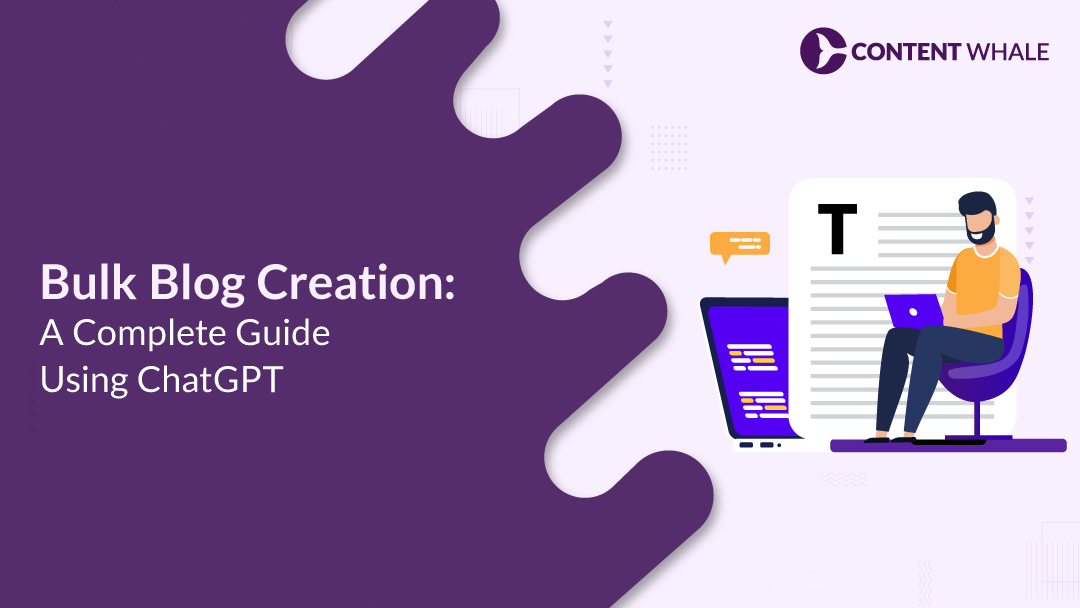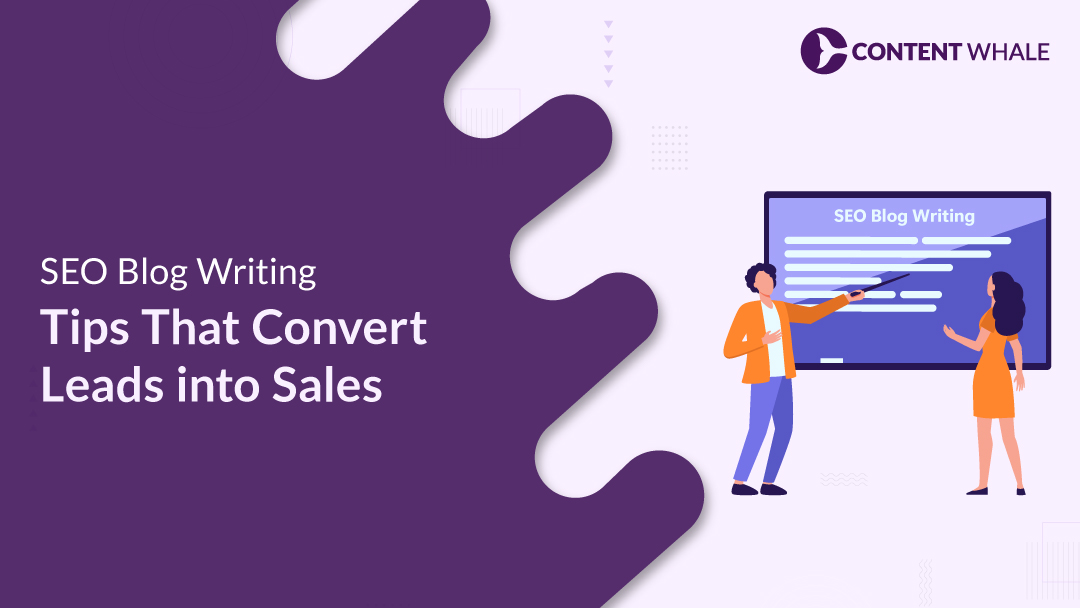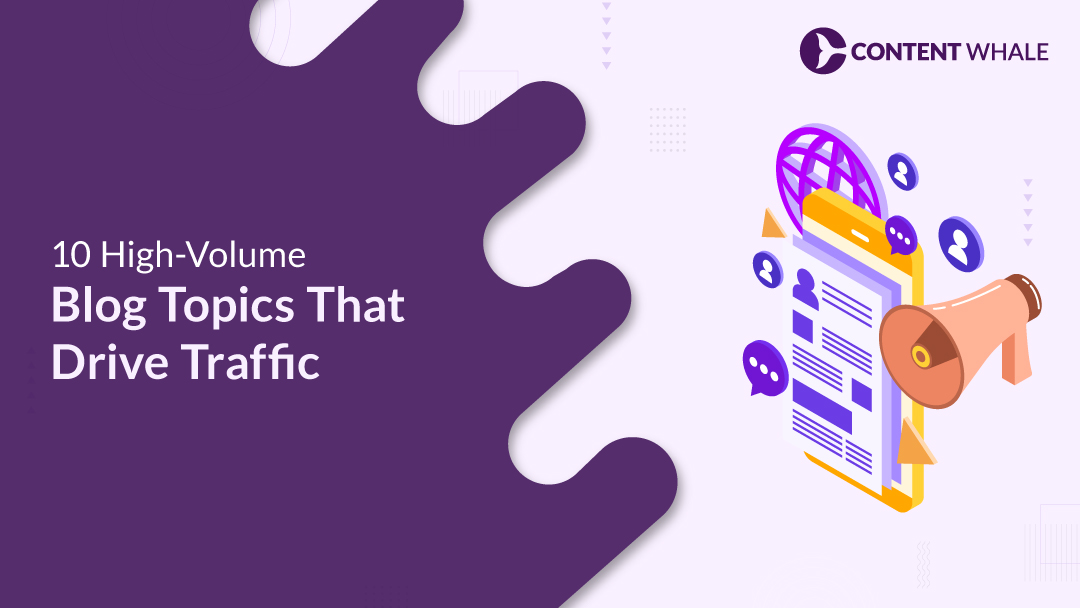Creating a steady stream of quality content can be challenging, especially for businesses aiming to scale up their blogging efforts. Bulk blog creation with ChatGPT offers a practical solution, helping marketers, bloggers, and business owners produce high-quality posts at scale.
Whether you’re looking to boost brand visibility, engage a wider audience, or support a bulk blog strategy, ChatGPT’s capabilities for automated content creation make the process remarkably efficient.
This guide dives into how to use ChatGPT effectively for blogging with AI, covering steps from topic selection and keyword integration to AI content generation and final edits.
By setting up a structured AI blog workflow and mastering content marketing automation, you can significantly reduce production time and enhance content efficiency.
With the right approach, ChatGPT can help you manage everything from AI-generated blog posts to SEO-friendly AI content that’s optimized for search engines and engaging for readers.
1. Understanding ChatGPT for Blog Creation
Creating high-quality blog content in bulk can be challenging, but ChatGPT simplifies this process significantly. Here’s a breakdown of how ChatGPT supports effective bulk blog creation and why it has become a preferred tool for many bloggers and businesses.
A) What is ChatGPT?
- Definition: ChatGPT is an AI-based text generation tool developed by OpenAI, designed to generate contextually relevant, coherent content across various topics.
- Application in Blogging: It can support bulk blog creation by generating drafts, brainstorming ideas, and refining content. With specific prompts, ChatGPT assists in building out full articles quickly, allowing creators to focus on editing and personalization.
- Adaptability: ChatGPT’s flexibility enables bloggers and marketers to tailor content for various audiences, making it ideal for both high-volume content creation and targeted blogging strategies.
B) Why Use AI for Blog Writing?
- Efficiency and Scalability: AI content generation with ChatGPT offers a way to quickly scale content production, making it a powerful tool for brands and bloggers aiming to publish frequently. With automated content creation, ChatGPT assists with everything from outlines to drafts, accelerating the workflow.
- SEO Benefits: ChatGPT also supports an AI SEO strategy by enabling keyword-rich content creation. When users provide structured prompts with keywords and phrases, the model can generate SEO-friendly AI content that aligns with search engine optimization practices.
C) Key Benefits of Using ChatGPT for Blog Writing
- Time-Saving: With ChatGPT, writers can accomplish tasks faster, which is especially valuable in high-demand content environments. This time-saving content creation approach reduces the workload of manual drafting.
- Consistent Content Quality: ChatGPT can follow detailed outlines to ensure content consistency across all posts. For bulk blog strategy, it maintains a uniform tone, style, and structure, even at scale.
- Enhanced Content Efficiency: ChatGPT’s structured outputs help streamline blogging with AI, offering content that fits a clear structure and can easily be customized.
D) Tips for Maximizing ChatGPT in Blog Writing
- Use Clear Prompts: Start with specific instructions, such as desired tone, style, and word count, to help ChatGPT align with your content needs.
- Set up a Strong Workflow: Establish an AI blog workflow that involves clear steps from ideation to editing. ChatGPT can support this by creating AI-generated blog posts and ChatGPT blog templates that follow a logical, SEO-friendly outline.
- Leverage Keywords: For optimal results, integrate keyword-rich content into your prompts, including primary, secondary, and LSI keywords. This setup enhances the relevance of AI content scaling for SEO purposes.
- Automate and Scale: For teams that handle extensive content, blog automation with ChatGPT offers an efficient way to publish content regularly. Pairing it with automated blog generation tools can streamline production from ideation through to publication.
2. Setting Up for Bulk Blog Writing Success
To make bulk blog creation with ChatGPT efficient and SEO-friendly, setting up your workflow and planning strategically are essential. Here’s how to lay a strong foundation for scaling content with AI and achieving high-quality output at a faster rate.
A) Choosing Topics and Keywords
- Topic Selection: Start with well-researched, relevant topics that align with your audience’s needs and interests. ChatGPT can assist by generating a list of blog ideas when prompted with a general theme, making it ideal for supporting a bulk blog strategy. For instance, entering a prompt like, “Give me 10 blog post ideas for [topic]” helps get the ball rolling.
- Keyword Research: Keywords are essential for SEO success. ChatGPT can generate keyword lists for each topic, which you can further refine with SEO tools. Including primary, secondary, and LSI keywords ensures a wide reach and a keyword-rich content base that can rank effectively on search engines.
B) Creating Blog Outlines with ChatGPT
- Detailed Outlines: Having a structured outline streamlines content production and provides a roadmap for writing. With prompts like, “Create a detailed blog post outline on [topic] including subtopics,” ChatGPT can generate well-organized outlines, covering all key points. This approach supports blog automation with ChatGPT by breaking down complex topics into manageable sections, increasing readability.
- Incorporate SEO Elements: Include your AI SEO strategy directly within the outline by specifying keywords for each section. An outline with integrated SEO not only keeps the content on track but also helps with time-saving content creation by reducing back-and-forth edits for optimization.
C) Defining Tone and Style
- Consistency in Tone: Whether it’s formal, conversational, or informative, specifying a tone helps ChatGPT maintain consistency across multiple posts. Specify the desired tone directly in your prompt, such as, “Write in an engaging, informative tone for a general audience,” to achieve a unified voice across your AI-generated blog posts.
- Customization for Target Audience: Tailor ChatGPT’s output to suit your audience by clearly outlining the target readers. A conversational, approachable tone may work well for a lifestyle blog, while a technical tone may suit industry-specific content. This setup makes blogging with AI more effective, engaging, and relevant to your readers.
D) Setting Up a Workflow for Efficient Production
- Use Templates for Consistency: Leverage ChatGPT blog templates to standardize your structure, keeping introductions, body sections, and conclusions uniform across posts. This approach is effective for high-volume, automated content creation that still feels cohesive.
- AI Tools for Further Optimization: Consider using other AI writing tools in combination with ChatGPT to help with editing, proofreading, and SEO analysis. By setting up a workflow that includes tools like Grammarly for proofreading and Ahrefs or SEMrush for keyword refinement, you can ensure your content is accurate, well-optimized, and ready for publication.
3. Generating Bulk Content Efficiently
To maximize bulk blog creation with ChatGPT, it’s essential to set up efficient workflows that streamline content generation. By optimizing each stage of the writing process, from structuring content to prompting the AI, ChatGPT enables faster, high-quality output. Here’s how to leverage this tool for efficient AI content generation and content marketing automation.
A) Crafting Effective Prompts for Bulk Content
- Tailored Prompts: The effectiveness of ChatGPT relies heavily on the specificity of the prompts. Detailed prompts, such as “Generate a blog introduction on [topic] using a friendly tone for a general audience,” help guide ChatGPT toward relevant and well-structured content. For larger projects, use multiple prompts to generate different sections, allowing you to control the flow and maintain focus on core ideas.
- Revised Output through Follow-Up Prompts: Refining prompts for each section, such as headlines, introductions, and conclusions, ensures consistency across posts. This method also supports writing automation by allowing ChatGPT to create content that follows a predetermined outline. Follow-up prompts improve the relevance and depth of AI-generated blog posts, making the output more engaging.
B) Using Subheadings and Bullet Points to Structure Content
- Structured Content Creation: Breaking content into sections with clear subheadings, such as using H2s and H3s for major and minor points, is vital for readability. ChatGPT excels in generating content with bulk writing techniques that naturally incorporate bullet points, lists, and numbered steps, enhancing the clarity of the content and improving content efficiency.
- Enhanced Readability with Bullet Points: Organizing complex information into lists or bullet points helps readers process information faster and reduces cognitive load. By prompting ChatGPT to use this structure, you make the content more scannable and accessible, a key component of SEO-friendly AI content.
C) Leveraging Automation Tools for High-Volume Content
- Integration with Workflow Automation Tools: Tools like Hexomatic and other automated blog generation tools work well with ChatGPT to facilitate large-scale content production. These platforms allow users to upload bulk prompts and automate AI content scaling for various content types, from blogs to ad copy. Integrating ChatGPT into such workflows means you can continuously produce content while monitoring quality and consistency.
- Bulk Processing for Long-Form Content: To produce long-form content efficiently, set up ChatGPT to handle individual sections or chapters. Using prompts tailored to each section ensures coherent flow and depth, making this approach ideal for ebooks, guides, or pillar blog posts. Such segmented generation allows scaling content with AI while preserving the detail and structure necessary for in-depth pieces.
D) Ensuring Quality and SEO Optimization
- SEO and Keyword Integration: Prompts that specify primary, secondary, and LSI keywords enhance the SEO performance of ChatGPT-generated content. By integrating keywords naturally within prompts, ChatGPT helps produce SEO-friendly AI content that meets search engine requirements. Additionally, specifying keywords in prompts increases the relevance of content for each section, enabling a bulk blog strategy optimized for search engines.
- Quality Control and Editing: After ChatGPT generates content, it’s essential to review and edit each piece for accuracy, clarity, and consistency. Editing is especially essential for AI SEO strategy and factual accuracy, as well as for removing redundancies. For bulk tasks, automated editing tools can assist in proofreading and style consistency, helping you deliver polished, high-quality posts faster.
4. Optimizing SEO for AI-Generated Content
To make bulk blog creation with ChatGPT both efficient and SEO-friendly, focusing on specific SEO elements ensures your content reaches a wider audience. Here’s how to integrate SEO best practices to improve visibility and relevance for your AI-generated blogs.
A) Integrating Primary, Secondary, and LSI Keywords
- Incorporate keywords naturally throughout each section of your blog. Begin by including primary keywords within the title and initial paragraphs, followed by secondary keywords in subheadings and main content.
- Additionally, LSI keywords (Latent Semantic Indexing) enhance topic relevance and expand your reach. ChatGPT can generate a list of LSI keywords, which you can fine-tune using SEO tools like Ahrefs or SEMrush to confirm search volume and relevancy.
B) Optimizing for Keyword Density
- Keyword density is essential for effective SEO. Aim to use your primary keyword between 1-2% of the total word count, while keeping the flow natural. Overuse can lead to keyword stuffing, which negatively impacts SEO.
- ChatGPT can assist in balancing keyword density by using prompts that specify the ratio of keywords to overall word count, maintaining the readability and SEO potential of your AI-generated blog posts.
C) Enhancing Meta Elements
- Crafting strong meta titles and descriptions is essential for SEO. Meta descriptions should be concise, engaging, and include relevant keywords to improve click-through rates.
- You can use ChatGPT to generate meta descriptions by specifying the primary keyword, topic, and desired character length in your prompt.
- For optimal results, ensure each meta description entices readers to click and offers a snapshot of the content’s value.
D) Structuring Content with Subheadings and Internal Links
- Using clear subheadings not only improves readability but also makes it easier for search engines to understand your content structure.
- Adding internal links to relevant pages within your website strengthens site authority and signals to search engines that your content is interconnected and valuable.
- This approach also supports content marketing automation by creating a network of related pages that keep readers engaged and improve SEO rankings.
E) Adding Schema Markup for Enhanced Visibility
- Schema markup, or structured data, allows search engines to read and display additional information about your content, such as FAQs or product details, directly in search results.
- ChatGPT can generate basic schema markup based on specific prompts, which you can then customize. Adding schema for FAQs, articles, or reviews makes your content more likely to appear in rich snippets, driving more organic traffic.
| # | Step | Description |
| 1 | Keyword Research | Use tools like ChatGPT and Semrush to identify primary and secondary keywords for higher visibility. |
| 2 | Organize Content Structure | Implement headings, subheadings, and bullet points to make content readable and SEO-friendly. |
| 3 | Optimize Meta Tags | Create compelling meta titles and descriptions that include target keywords to boost click-through rates. |
| 4 | Enhance Content Quality | Fact-check, proofread, and improve readability using tools like Grammarly to ensure credibility. |
| 5 | Incorporate Internal Links | Link to related pages on your site to boost engagement and SEO ranking. |
| 6 | Monitor Performance | Track metrics like CTR and bounce rate to refine content based on SEO outcomes. |
5. Editing and Personalizing AI-Generated Blogs
Effective editing and personalization are essential steps in refining AI-generated blog posts created with ChatGPT. While the initial content provides a strong base, adding a human touch ensures quality and alignment with brand voice. Here are some practical techniques for transforming ChatGPT drafts into polished, reader-friendly content.
A) Why Editing is Necessary for AI-Generated Content
- AI content, while efficient, can occasionally miss nuances that resonate with readers. Incorporating a human edit ensures the blog aligns with your unique voice and accurately presents facts.
- This is especially important when implementing a bulk blog strategy with automated content creation, as a standardized editing process ensures consistency across multiple posts.
B) Fact-Checking and Tone Adjustment
- Fact-Checking: ChatGPT’s knowledge has limitations, so verifying factual information is essential, especially for data-heavy topics. Fact-checking builds trust with your audience and enhances the reliability of your AI content generation.
- Adjusting Tone and Style: AI drafts may sound mechanical or overly formal. Adjusting tone to match your brand’s personality can make the content more engaging. For example, converting technical language into approachable terms for general readers or refining phrasing to reflect a conversational tone enhances the content’s relatability.
C) Tools for Proofreading and Plagiarism Checking
- Proofreading: Tools like Grammarly or Hemingway Editor help fine-tune grammar, sentence flow, and readability, ensuring the text is clear and free of errors. This step is essential for improving content efficiency and ensuring professional-quality output.
- Plagiarism Checks: Although ChatGPT typically generates unique content, a plagiarism scan adds a layer of security, especially with high-volume content creation. Grammarly’s plagiarism tool or other platforms can help verify originality, adding confidence when publishing large quantities of SEO-friendly AI content.
D) Tailoring Content with Specific Prompts
- For further personalization, you can provide ChatGPT with tailored prompts to refine individual sections or incorporate keyword-rich content. Clear, section-based prompts allow for adjustments specific to subheadings, helping maintain a smooth and logical AI blog workflow.
- This approach not only saves time but also enhances content marketing automation by creating a streamlined, repeatable process for scaling up blog content.
6. Scaling Your Content Production
Scaling content production effectively with bulk blog creation using ChatGPT can help you meet high output demands without compromising quality. By setting up clear strategies, integrating automation tools, and ensuring a seamless workflow, businesses can consistently produce and publish content to meet audience expectations.
| # | Tool | Primary Function | Key Features | Best For |
| 1 | ChatGPT | AI Content Generation | Customizable prompts, multi-language support, text generation | AI content scaling and blog ideation |
| 2 | Surfer SEO | Content Optimization | Keyword analysis, content scoring, SERP analysis | SEO-friendly AI content |
| 3 | Grammarly | Proofreading & Editing | Grammar checking, style improvements, tone adjustments | Improving content efficiency |
| 4 | Hexomatic | Workflow Automation | Task scheduling, AI integration, data collection | Blog automation with ChatGPT |
| 5 | Hootsuite | Social Media Scheduling | Post scheduling, analytics, social listening | Content marketing automation |
| 6 | Jasper | AI Content Creation | Long-form generation, brand voice customization | High-volume content creation |
| 7 | Originality AI | Plagiarism Detection | AI-generated content detection, originality score | Ensuring unique AI-generated blog posts |
A) Scheduling and Automating Content
- Scheduling for Consistency: Use platforms like Buffer or Hootsuite to automate blog post scheduling. This approach allows you to maintain a steady content flow, ensuring readers receive new content regularly. ChatGPT’s integration with scheduling tools enables you to produce, schedule, and track blogs, forming a streamlined content pipeline.
- Automated Blog Generation Tools: Tools like Jasper or Rytr can work alongside ChatGPT, helping generate content while you focus on planning and editing. These tools boost efficiency by combining AI content generation with automation, reducing the time and effort required to manage multiple pieces of content at once.
B) Monitoring Performance and Adjusting Content
- Performance Analysis: Track the success of each blog using analytics tools like Google Analytics or Ahrefs. Analyzing metrics such as traffic, bounce rate, and engagement helps refine your bulk blog strategy. Observing these metrics allows you to adjust topics and keywords based on real-time data, enhancing your AI SEO strategy.
- Adapting Content Based on Results: By regularly reviewing performance, you can fine-tune ChatGPT’s prompts and adjust content according to reader preferences and SEO needs. For instance, if certain keywords perform better, integrating them into prompts will align new posts with what resonates best with your audience.
C) Utilizing AI-Generated Content Efficiently
- Using AI for Blog Ideation and Workflow: ChatGPT can generate ideas and draft content quickly, making it ideal for brainstorming and initial content production. Starting with AI-driven outlines, you can add personalized insights and industry-specific details for more engaging posts. This practice, known as AI blog workflow, is a practical way to increase output while maintaining a personalized touch.
- Template-Based Production: For high-volume needs, ChatGPT templates simplify the process by allowing you to standardize formats and structures across blogs. With customizable ChatGPT blog templates, you can streamline content production, enhancing content marketing automation and improving overall efficiency.
7. Key Takeaways: Bulk Blog Creation Using ChatGPT
- Bulk Blog Creation with ChatGPT: ChatGPT streamlines high-volume blog production with efficient, structured content generation, especially when used with well-crafted prompts.
- Optimizing for SEO: Integrating primary, secondary, and LSI keywords, along with optimized meta titles and descriptions, enhances SEO performance for AI-generated content.
- Automation and Workflow Efficiency: Automation tools and a structured AI blog workflow increase productivity and maintain content consistency across posts.
- Editing and Human Touch: Fact-checking, tone adjustment, and final edits ensure that AI-generated blog posts resonate with the audience and meet quality standards.
- Scaling Content Production: Scheduling, tracking performance, and using automated blog generation tools support high-output needs while maintaining quality and relevance.
Conclusion
Leveraging bulk blog creation with ChatGPT offers a practical and scalable solution for content marketers and businesses aiming to expand their digital reach. By integrating automated content creation with a structured AI blog workflow, you can streamline your blog production, optimize for SEO, and reach a broader audience efficiently.
ChatGPT’s ability to generate keyword-rich, SEO-friendly AI content makes it an asset in today’s fast-paced content marketing world. With a combination of blog automation with ChatGPT, efficient writing automation, and thoughtful editing, you can maintain a high standard of quality while producing a significant volume of content.
As you implement this AI content scaling approach, remember the importance of human oversight in fact-checking, tone adjustment, and brand alignment. The integration of AI tools with traditional content workflows can not only improve content efficiency but also allow for rapid adaptability in response to market trends, ensuring your content remains relevant and engaging.
At Content Whale, we specialize in bulk blog creation with a strategic blend of AI content generation and expert editing, ensuring SEO-optimized, high-quality output. With experience in automated content creation and robust content marketing automation, we streamline workflows to maximize efficiency.
Let us help you elevate your content game with fast, scalable, and reliable solutions.
Bonus Tip
- Customize Prompts for Precision: Tailor prompts with clear instructions about style, tone, and keyword integration. This approach guides AI to deliver relevant, SEO-focused content.
- Define Target Audience and Goals: Specify the audience and purpose to create content that resonates with readers and aligns with SEO objectives.
- Request Specific Structure and Headings: Including detailed instructions for headings and key sections improves readability and helps search engines understand content organization.
- Minimize Generic Outputs: Use unique prompts per section to avoid repetitive content, ensuring originality and reducing the risk of duplicative material across pages.
FAQs
1. Can ChatGPT generate unique content for each blog post in bulk?
Yes, ChatGPT for blog writing can produce unique content by responding to diverse, structured prompts for each blog. While it’s essential to use distinct prompts and outlines to ensure uniqueness, AI-generated blog posts can be personalized further through manual edits and tone adjustments to fit brand-specific needs.
2. How do I maintain quality when using ChatGPT for bulk content creation?
Maintaining quality in bulk blog creation with ChatGPT requires a blend of AI and human review. Implementing a standardized AI blog workflow that includes fact-checking, proofreading, and editing helps refine the AI’s initial drafts, ensuring accuracy and brand consistency. Tools like Grammarly and Surfer SEO can assist in optimizing and polishing the content.
3. What type of topics work best with ChatGPT for high-volume content?
ChatGPT performs effectively on informational topics with clear structure, such as how-to guides or topic explorations. For a successful bulk blog strategy, break down complex subjects into smaller sections or use outlines to guide ChatGPT’s responses. This approach streamlines content marketing automation and supports consistent, high-quality outputs.
4. How can I make AI-generated blogs SEO-friendly?
To create SEO-friendly AI content, integrate primary and secondary keywords, and use LSI keywords throughout your prompts. Structuring content with subheadings, bullet points, and internal links can further enhance readability and SEO, ensuring the blog is optimized for search engine ranking. AI tools like Surfer SEO can also help refine keyword density and relevancy.
5. How many blog posts can ChatGPT generate in one session?
The number of blog posts depends on the complexity of prompts and the platform used for blog automation with ChatGPT. On average, multiple drafts can be created within a session. However, for high-volume content creation, it’s effective to generate individual sections in stages and then combine them in the final editing phase to maintain quality across posts.





